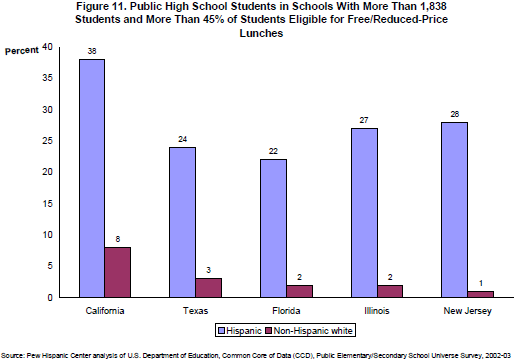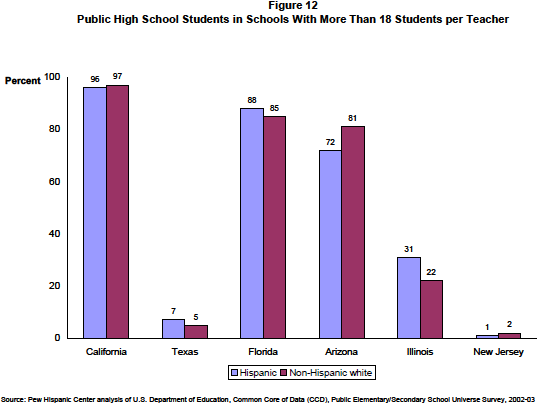Although much of the literature on educational outcomes concentrates on the characteristics of the student, a growing body of research shows that the structure and resources of the high school and school processes matter for student performance. In short, “schools exert a powerful influence on students’ achievement” (Rumberger and Thomas, 2000). In regard to structural characteristics of high schools, most of the debate has focused on the benefits of public versus private control and whether there is a Catholic school advantage.
Size of High School
Recent research suggests that larger high schools are less likely to retain their students, i.e., they have higher dropout rates. On the basis of a nationally representative sample of 190 urban and suburban high schools, Lee and Burkam (2003) find that students in high schools enrolling fewer than 1,500 students more often stay in school. They conclude that “our results demonstrate that school size is quite important and that students in medium-sized schools are the least likely to drop out.”


High school size is also related to student learning. Lee and Smith (1997) examine how students’ test score gains in mathematics and reading during high school are influenced by the size of the high school they attend. They find that the ideal size for a high school in terms of student learning is between 600 and 900 students. Students in high schools with fewer than 600 students learn less; students in larger high schools (especially over 2,100 students) learn considerably less.
Larger schools may lead to lower student achievement, particularly among economically disadvantaged students (Bickel et al., 2001). One reason that students in larger schools may learn less is that larger schools tend to feature more elaborate and differentiated academic curricula. They have more nonacademic offerings, and not all students must complete most of the course sequence to graduate. Curriculum differentiation has negative effects for student learning and size facilitates curriculum differentiation (Lee and Bryk, 1989).
Although teachers’ perception of student behavioral problems is not necessarily related to student performance, teachers in larger high schools are more likely to report that their students have problems. The percentage of teachers reporting that student apathy, tardiness, absenteeism, dropping out, alcohol use, drug abuse and fighting among their students are “serious” problems in their school increases with high school size (NCES, 2003a).
Additional Structural Characteristics of High School
Characteristics other than size also influence student dropout rates. Schools in urban areas and with higher student-teacher ratios have higher dropout rates (Rumberger and Thomas, 2000). An important non-finding is that neither minority concentration nor ethnic concentration appears to be associated with high dropout rates after taking other school characteristics into account (Lee and Burkam, 2003; Rumberger and Thomas, 2000).




